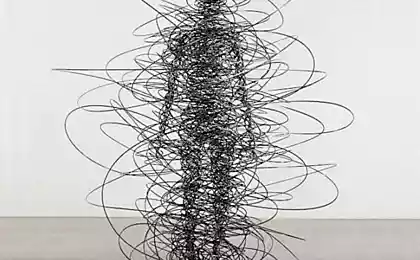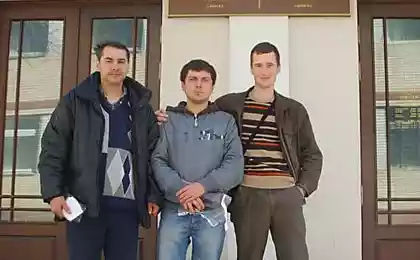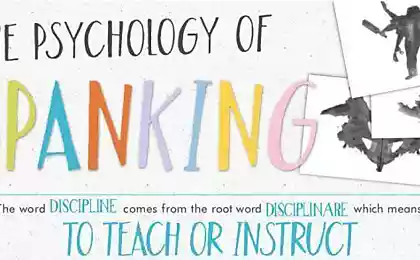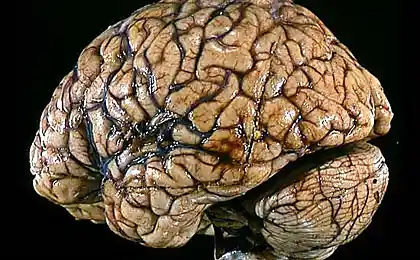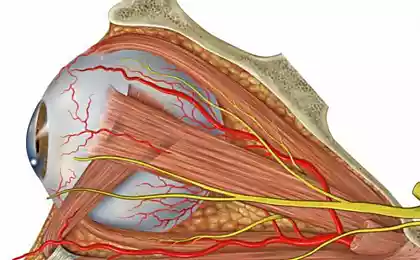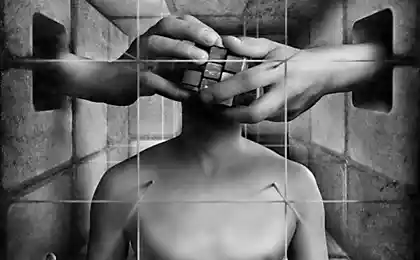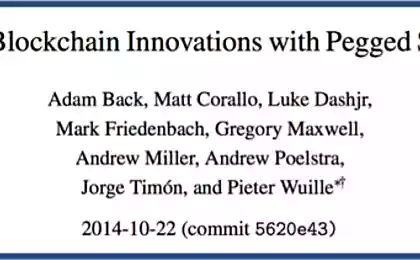536
Protocol cingulate gyrus: removed the handbrake
Yesterday I told about the handbrake that we have brain. Cingulate gyrus can also be compared with the transmission. Under stress it gets stuck, which makes us rigid and we lose the ability to adapt. This behavioural rigidity significantly reduces our stress. Today I will tell you how to normalize activity in the cingulate gyrus (most of the exercises from the book replacing "the Brain and love").
The children's behavior.
Understand that the problems with the cingulate gyrus is not about your traits or features and manifestations of stress tired cingulate gyrus. This child's behavior when the child is still immature cingulate gyrus: he loves to suck on a pacifier for a long time to do the same, loves rituals and is often upset if the ritual is not consistent. Children often want only the "favorite doll" and refuse to communicate if it is not. With the strengthening prefrontal such behavior is weakened, but may again become active in adults
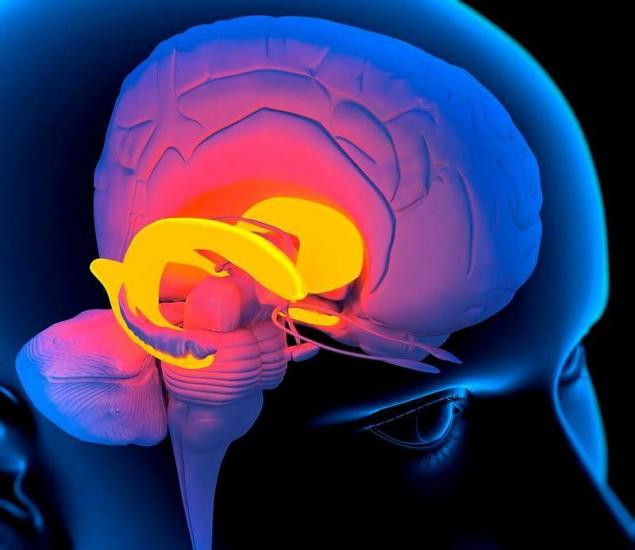
Be distracted. Notice when you start to commit and take a break and return to the topic later. The first step to correction of disorders of the brain is to notice that you are "hung" and distracted from the thoughts that started running in circles. Be aware of the emergence of Intrusive thoughts is very important in order to control them. As soon as you catch yourself in that thought went in a circle, take a break from it. Get up and go do something else. Distraction is often effective.
Some of the patients with dysfunction of the cingulate system say that it helps to make a list of things that distract from Intrusive thoughts.
For example:
singing favorite songs;
listen to the music uplifting;
to go for a walk;
to do housework;
to play with the animals that live at your home;
let us pray;
focus all of your attention on one word and not let other thoughts get into the mind (imagine a broom that sweeps out all the other thoughts).
If you actively distract from the obsessive thoughts and to block them, eventually they will lose over you his power.
The practice of mindfulness.
Watch yourself and pay attention when you "engage" or began to chew over the problem instead of to solve it. Remember, what is important is the thoughts that lead to actions. Read more about consciousness.
All parts of the neural axis work together, but the two parts have a special mechanisms that are provided with their neural spikes going in all directions. We are talking about the anterior cingulate cortex (ACC) and the amygdala.
Let's start with the ACC (more information can be found in Lewis and Todd, 2007; Paus, 2001). ACC is closely connected with evolutionary young areas of the prefrontal cortex – dorsal (posterior) frontal cortex and the lateral (side), along this zone indicate difficult - to- pronounce term "dorsolateral prefrontal cortex (DLPK)". This area of the cortex, the main neural substrate of memory DLPK is a kind of temporary auxiliary storage, where the brain puts the information required to address critical tasks and decision-making.
In addition, ACC has permanent contact with the supplementary motor area of the cortex, where are planned new actions. Through these connections, PPK organize our actions to achieve certain goals. When the goal becomes clear, the fragments of our inner experience, which is necessary to achieve the goal, together, and this process is expressed in the so-called narley coherence (consistency).
In the "order" of the ACC, many far removed (at microscopic scale) from each other regions beginning to throb together, coordinating phases of the bursts and attenuation, excitation and inhibition. Usually this neural synchronicity pulsing in gamma-rhythm, 30 to 80 times per second (Thompson and Varela, 2001). PPK – chief curator of our attention. She monitors our progress towards the goals and highlights contradictions between them. Its upper levels are enhanced control, deliberate and continuous regulation of thoughts and behavior. These areas are ripe only 3-6 years (Posner and Rothbart, 2000). This is essentially why children are less in control than adults. PPK works every time when you consciously fulfill their intention. Through the dense bilateral connections with the amygdala, hippocampus and hypothalamus PPK affects the emotions is itself subject to their influence.
We can say that it is the main center of the connection of thoughts and feelings (Lewis, 2005). The strengthening of the ACC (through meditation, for example) helps a person to think clearer when he's upset about something, and brings in logical reasoning warmth and emotional intelligence. In other words, PPK is in the center of the top-down, deliberate, centralized, deliberate motivation.
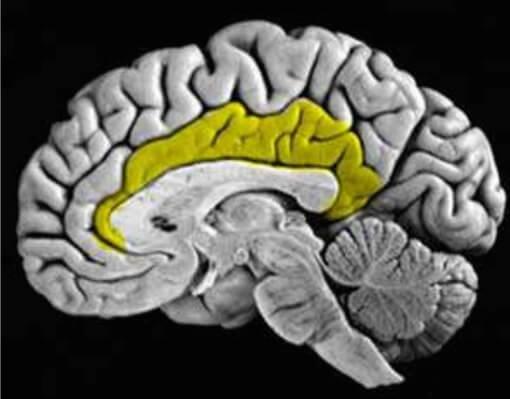
Protocol cingulate gyrus: removed the handbrake.
Do not think, and write. If you are stuck on a certain image or thought, take a sheet of paper and write what you see or think, and then again write how to get out of it or how the situation can develop further. You should write because you think of the story and written the design involved quite a lot of other parts of the brain. This will allow the momentum stuck in singulyarnoi gyrus to escape from prison.
Help different writing technique: you can just write whatever comes to mind. If you are tormented by the situation, write down all the possible ways of solving even the most absurd and. Important:to not think about, and to write – in these processes involves different parts of the brain! If that seems to solve the issue, again, will help old-fashioned plan. Also in written form, but with precise and vivid detail. The exact time of execution, if you are prone to obsessions, it is not necessary to attach. It will be much to distract from the implementation of the plan.
If you commit to one thought, writing often helps her to get rid of it. When you write it down, it often goes out of my head. Seeing it written on paper, easier to deal with it best practices. If Intrusive thoughts lead to sleep problems, keep next to the bed, paper and pencil to write them down. Writing such an idea, make a list of what you can do and what you do not.For example, if you are concerned about the situation at work, whether you receive the increase or not, do the following.
1. Record this thought: "I'm worried, will I get a promotion at work".
2. Write down what you can do to cause your concern:
"At work, I can try my best".
"I'll still be reliable, hardworking and creative worker".
"I will make it so that the head will not be doubt that I deserve a raise". "Confident but not bragging, I will tell my boss about what I did for our company."
3. Make a list of things that you are able to do about his anxiety: "I can't decide for the chief."
"I can't want this promotion more than I want to."
"I am not able to directly affect the decision on my promotion. My excitement will not help".
"I'm not able to make decided to raise me (although a lot depends on my mood and work)".
Use this simple exercise to break out of the cycle of thoughts that keep you awake at night and keep you in suspense.
The view from the outside. If you're stuck on a problem, the side view is the best solution. Do not hesitate to ask for help from friends, if you can't handle spinning in my head thoughts. But not so the friend said something like" spit and forget" or " what disgusting things you're thinking." Need to help you to work through the material stuck in your head.
If all attempts to get rid of obsessive thoughts are unsuccessful, it often helps to seek advice from a person with whom you can discuss your worries and fears or obsessive acts. Sometimes, just talking about what you do not give rest an idea, etc., you suddenly discover that you can see the output. For several years I myself was looking for solutions, discussing the issue with people more experienced than I am. Others can become just students: before them in formulating their problem, you get the opportunity to see new solutions and to compare their perception with the perception of others.
Think of the paradox. Practice paradoxical thinking. Consider the problem from different angles, from different points of view, with studies for and against.
Physical activity. Yes, and she immediately. They say that these departments by regular exercise functions better. Even a simple squat requires fast switching from one muscle group to another. This is among other things useful that you can get from physical activity. Physical exercises are often very effective means to reduce anxiety and enhance cognitive flexibility. During training in brain tissues increases the level of tryptophan. As noted, a molecule of tryptophan has a relatively small size, and because it often has to fight with larger molecules for the ability to enter the brain. During exercise the body uses amino acids with larger molecules to restore muscle strength, thus reducing their content in the blood. At this time, the tryptophan can in large quantities to enter the brain, increasing the levels of serotonin. In addition, exercise increases your energy and distract you from unpleasant Intrusive thoughts. I often suggest confrontational children are more likely to engage in physical exercise: it helps them to increase the level of tryptophan and easier to interact with others.
Emancipate the muscles of the face to Wriggle in front of the mirror to make anti-stress massage of the face and head (technology is here in this video). Tics and twitching eye is a clear indicator of problems with lumbar gyrus. The stimulation of motor area cingulate cortex tygodnie possible movement involving the muscles of the lips, tongue, hands that a person can delay an effort.
Spontaneity.
To dance, to play any game, go to a new place, do something unusual. Neurons in the cingulate motor cortex is activated during movement, and in its caudal parts particularly high proportion of neurons that are selectively activated during spontaneous movements. The spontaneity perfectly reduces hypertonicity cingulate gyrus and decreases stress levels. To heal that part of our consciousness, we should in particular teach him to search for new options and options and new ideas.
Throw away the old stuff and upgrade everything you can.
Characteristic lesions of the cingulate gyrus is a hoarder.
Patients with hoarder — pathological drives that suffer from extreme neglect yourself, apathy, emotional instability, suspicion and lack of shame. All this often turns against them. A hoarder often leads to social isolation, which increases as the dwelling of a person accumulates the trash, and appearance changes under the influence of the disease. Such people accumulate a huge amount of unnecessary things, indifferent to dirt and debris, unfriendly to visitors and, as a rule, one way or another resist attempts to help them change their lifestyle. However, they are not always poor: I just prefer not to spend money. It is believed that the syndrome occurs because of disorders in the anterior cingulate gyrus and insular lobe, which is usually involved in the decision-making process.
Pause As already noted, many people with dysfunction of the cingulate system, there is a tendency to automatically reply "no". Fight this tendency. Before you respond to the request or question the usual "no", take a breath and think, is it really a negative answer in this case is optimal. Often helps this scheme: inhale, pause for three seconds, then five seconds, doing an exhalation. This gives you extra time before you answer. For example, if your spouse calls you to bed to make love, before you answer that you are tired sick, really busy or not in the mood, take a deep breath. While you inhale, think about whether you want to refuse your partner. Really would you feel better if you say failure and continue to go about their business, or for you it is better to be in a relationship with this man. Automatic "no" has destroyed not one love. Give yourself plenty of time to wonder whether you mean "no", answering "no"?
Awareness begins with the ability to take a break.
Don't argue. If you are with someone argue and see that this man was "stretch", take a pause, take a break. Let him last for ten minutes, ten hours or ten days! If you manage to escape from the situation lose-lose where everybody loses members, you will be able to later return to discuss and solve the problem.
I understand that it is not necessary to argue with those who have disrupted the function of the cingulate system. When a person "locks" on some thoughts or actions, logical arguments usually do not help. One of the most effective, in my experience, communication with the "shutting" is as follows: I briefly present what they want to say. If I see that my interlocutor begins to dwell on their position, I try to change the subject and shift his attention. This gives time for his subconscious to digest what I had to say, not engaging with this idea in a confrontation. Often, when we come back to this conversation some time later, people already easier to accept my point of view.
This technique often helps in communicating with teenagers. Many of them argue and contradict a senior natural process of growing up and separating from parents. I suggest parents to get away from the confrontation with the children, quickly stating its position and switching to another topic. If we are talking about matters of principle, return to their discussion later.
One of the best tips that I give to couples with marital problems, remains the same: "Go to toilet". If you see that your partner starts to repeat, and the belt system is being more involved in your dispute, apologize and tell him you need the toilet. Few people would argue with a man who felt such a natural need, in the meantime, the pause in the dispute often turns out to be useful. If your partner went into a steep "dive", take a book thicker and stay longer.
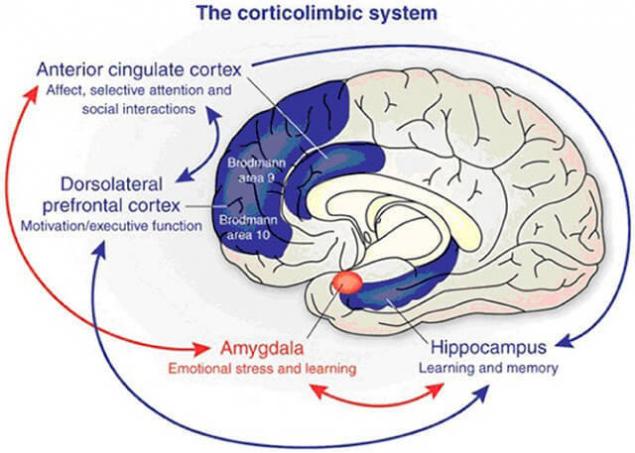
Ask and do "the opposite" Remember "reverse psychology"? It works well in communicating with people who have a disorder of cingulate system. But use it carefully. Using "reverse psychology", you ask almost the exact opposite of what you want to get. If you want your two year old child, stubborn as all children at this age, you kissed, tell him: "I don't want to be kissed". And now the child requested to be allowed to kiss you. If you want someone helped you to do something, we must say: "You probably will not to help me." Family therapists have developed whole methods "paradoxical" schemes for working with resistant couples. In these methods, the calculation is done on the resistance of the pair the recommendations of the therapist. For example, if a couple can't spend enough time together and have sex, the therapist will advise them never to spend time together and certainly not to have sex. Many couples are surprised to discover that, after receiving such advice, they begin to communicate more and make love so often and with such passion which they had for many years.
Psychotherapists have long been concerned that some patients "paradoxical" recommendations. Such techniques are known under different names: antiphase, negative practice, paradoxical intention, a method of obfuscation, declaring that the patient is hopeless, advice to limit changes to cause a new aggravation, therapeutic double-blind method, etc., In principle, they all boil down to the fact that the patient suggest the opposite desired effect. For example, if a person suffers from insomnia, he can say: "When you go to bed, try as much as possible not to fall asleep". In the treatment of men who could not write in public restrooms due to high anxiety, psychologists L. M. Ascher and P. M. Turner advised them to go into public restrooms and fully follow the algorithm: to stand in front of the urinal, undo his pants, grab his penis, but not to write. Repeating the procedure several times, the patients get rid of the fear of public urination. It seems to me that such tactics are most effective with regard to patients with impaired function of the belt system.Every time you need to achieve from such a person any action, it is best to furnish it so he thought it was his idea, his initiative. If you ask him directly, then most likely you will be disappointed. Involve him in the decision-making process.
For example:
If you want to meet him for lunch, do not ask him to meet you at so-and-so and so-and-so. Better to ask when it is convenient?
If you want it to hug you, it is better to say: "I guess you're not gonna hug me."
If you want to go with you shopping, say something like: "I guess you're not coming with me to the store."
If you want people finished the report by next Thursday, say: "you Probably will not have time to finish by next Thursday".
If you want to achieve from the child that he complied with the request without scandal, tell him: "I guess you can't do that without upsetting and arguing".
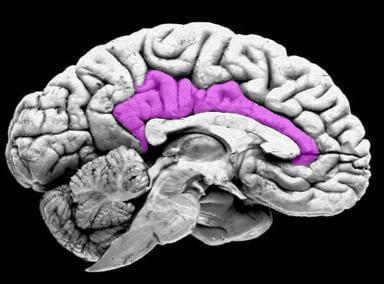
Learn how to handle "difficult" children when Faced with "difficult" children, remember the two main Council. Such children are often recorded on the negative behavior. If you are able to find the right approach, it could change their lives. The first tip is this: to break their fixation on obsessive thoughts or actions, where they become stubborn and hostile, try to understand at what point of distraction. Distraction is an effective technique that helps to release from the "fixing" of people with impaired function of the belt system. Distract a child, changing the subject, switching his attention to physical activity (send it out, asked to play) or on the assignment, which is an exercise in distraction.
Parents of children with impaired function of the belt system is very important to adopt its "higher" power. Parents should not allow confrontational behavior was winning. Otherwise, they only develop in the child the inclination, which may ruin his entire life. Parents, indulge the requirements, do not teach a child to obey authority. Therefore, these children have difficulties in school and in society. The most effective children usually grow up in authoritarian parents, have strong positions. Just as people with OCD is harder to resist compulsive thoughts and actions, if they give in to them, and confrontational behavior in children if they give in, it only gets worse. The sooner you wean children from such behavior, the better for everyone. To this end, I have developed a set of rules for parents, which was the first step in learning to dealing with such children. It is important to clearly articulate the rules and make it clear that you do not intend them (those rules) to retreat. Here are two rules regarding confrontational behavior.
Do what parents say, the first time.
No arguments with parents.
These rules establish that you, as a parent, have the power, and you will not allow the child to fight with you. If you take it a rule to get their children obedience the first time, they will know that this is what is required of them. If they are not obeyed, you should immediately stop the disobedience. It is not necessary to repeat my request over and over. In this case, the chances that you will hurt my child by word or action, are multiplied. If you asked a child to do something and he refuses or hesitates — do not delay "for later", tell him: "Choose. Can do this now or wait and do it later. I don't care. Decide for yourself." If the child is in no hurry to immediately comply with your request, give him a timeout. If necessary, this algorithm can be repeated. In case of disobedience, take action quickly, firmly, without emotion. The more emotional you begin to communicate, the worse you behave such children. Here the sequence is important.
The second rule (no arguments with parents) in dealing with confrontational children is extremely important. If you allow a child to argue with you, it only enhances and contributes to its resistance, caused by a fault in the belt system. Of course, you are interested to hear your child's opinion.
However, a distinction between a statement of opinion and dispute. Maybe it makes sense to warn the child: "of Course we're your parents and want to know your opinion. But if you repeated it two more times, then it is a dispute".
This kind of "parental intervention" is always effective when taking place against the background of good relations between parents and child. Parents developing a "limbic" communication with your own child, talking with him and listening to him, rarely face such a problem as confrontational behavior.
Summarize what was said. In the confrontational relationship with the children if necessary, use a method of distraction, while remaining, however, rigid and authoritarian. See how much you argue with them. Not to quarrel on any issue. Unfortunately, confrontational children one or both parents suffer from disturbances in the cingulate system, and this only exacerbates the problems of such families. Meanwhile it often becomes easier when parents show some flexibility.
Altruism If you've read this far, here's a gift – the best way to reduce hypertonicity cingulate gyrus. Early observations of human brain activity showed that when performing a merciful deed he increases the activity of the support system. This system in the brain responsible for feeling pleasure, so it turns out that people, even helping others, still acts in its own interests. It has been proven in experiments on monkeys.
If the monkey acted in its own interests, it has intensified the cells of the orbitofrontal cortex, which is responsible for personal benefit. If a monkey gave juice another, it triggered some neurons of the anterior cingulate, silent during "selfish" act.
"Altruistic" neurons do not interfere with the pleasure of helping one another, but only point to an additional source of such pleasure. The same area of the brain involved in social interaction: for example, when a loved one gets into a difficult situation, for him "experiences" that the cingulate gyrus.
Death.
Reflections on his death and limbs being well reduce the tone of the cingulate gyrus. Suggest. published
Author: Andrei Beloveshkin
P. S. And remember, only by changing their consumption — together we change the world! ©
Join us in Facebook , Vkontakte, Odnoklassniki
Source: beloveshkin.com/2015/10/protokol-poyasnoj-izviliny-snimaemsya-s-ruchnika.html
The children's behavior.
Understand that the problems with the cingulate gyrus is not about your traits or features and manifestations of stress tired cingulate gyrus. This child's behavior when the child is still immature cingulate gyrus: he loves to suck on a pacifier for a long time to do the same, loves rituals and is often upset if the ritual is not consistent. Children often want only the "favorite doll" and refuse to communicate if it is not. With the strengthening prefrontal such behavior is weakened, but may again become active in adults

Be distracted. Notice when you start to commit and take a break and return to the topic later. The first step to correction of disorders of the brain is to notice that you are "hung" and distracted from the thoughts that started running in circles. Be aware of the emergence of Intrusive thoughts is very important in order to control them. As soon as you catch yourself in that thought went in a circle, take a break from it. Get up and go do something else. Distraction is often effective.
Some of the patients with dysfunction of the cingulate system say that it helps to make a list of things that distract from Intrusive thoughts.
For example:
singing favorite songs;
listen to the music uplifting;
to go for a walk;
to do housework;
to play with the animals that live at your home;
let us pray;
focus all of your attention on one word and not let other thoughts get into the mind (imagine a broom that sweeps out all the other thoughts).
If you actively distract from the obsessive thoughts and to block them, eventually they will lose over you his power.
The practice of mindfulness.
Watch yourself and pay attention when you "engage" or began to chew over the problem instead of to solve it. Remember, what is important is the thoughts that lead to actions. Read more about consciousness.
All parts of the neural axis work together, but the two parts have a special mechanisms that are provided with their neural spikes going in all directions. We are talking about the anterior cingulate cortex (ACC) and the amygdala.
Let's start with the ACC (more information can be found in Lewis and Todd, 2007; Paus, 2001). ACC is closely connected with evolutionary young areas of the prefrontal cortex – dorsal (posterior) frontal cortex and the lateral (side), along this zone indicate difficult - to- pronounce term "dorsolateral prefrontal cortex (DLPK)". This area of the cortex, the main neural substrate of memory DLPK is a kind of temporary auxiliary storage, where the brain puts the information required to address critical tasks and decision-making.
In addition, ACC has permanent contact with the supplementary motor area of the cortex, where are planned new actions. Through these connections, PPK organize our actions to achieve certain goals. When the goal becomes clear, the fragments of our inner experience, which is necessary to achieve the goal, together, and this process is expressed in the so-called narley coherence (consistency).
In the "order" of the ACC, many far removed (at microscopic scale) from each other regions beginning to throb together, coordinating phases of the bursts and attenuation, excitation and inhibition. Usually this neural synchronicity pulsing in gamma-rhythm, 30 to 80 times per second (Thompson and Varela, 2001). PPK – chief curator of our attention. She monitors our progress towards the goals and highlights contradictions between them. Its upper levels are enhanced control, deliberate and continuous regulation of thoughts and behavior. These areas are ripe only 3-6 years (Posner and Rothbart, 2000). This is essentially why children are less in control than adults. PPK works every time when you consciously fulfill their intention. Through the dense bilateral connections with the amygdala, hippocampus and hypothalamus PPK affects the emotions is itself subject to their influence.
We can say that it is the main center of the connection of thoughts and feelings (Lewis, 2005). The strengthening of the ACC (through meditation, for example) helps a person to think clearer when he's upset about something, and brings in logical reasoning warmth and emotional intelligence. In other words, PPK is in the center of the top-down, deliberate, centralized, deliberate motivation.

Protocol cingulate gyrus: removed the handbrake.
Do not think, and write. If you are stuck on a certain image or thought, take a sheet of paper and write what you see or think, and then again write how to get out of it or how the situation can develop further. You should write because you think of the story and written the design involved quite a lot of other parts of the brain. This will allow the momentum stuck in singulyarnoi gyrus to escape from prison.
Help different writing technique: you can just write whatever comes to mind. If you are tormented by the situation, write down all the possible ways of solving even the most absurd and. Important:to not think about, and to write – in these processes involves different parts of the brain! If that seems to solve the issue, again, will help old-fashioned plan. Also in written form, but with precise and vivid detail. The exact time of execution, if you are prone to obsessions, it is not necessary to attach. It will be much to distract from the implementation of the plan.
If you commit to one thought, writing often helps her to get rid of it. When you write it down, it often goes out of my head. Seeing it written on paper, easier to deal with it best practices. If Intrusive thoughts lead to sleep problems, keep next to the bed, paper and pencil to write them down. Writing such an idea, make a list of what you can do and what you do not.For example, if you are concerned about the situation at work, whether you receive the increase or not, do the following.
1. Record this thought: "I'm worried, will I get a promotion at work".
2. Write down what you can do to cause your concern:
"At work, I can try my best".
"I'll still be reliable, hardworking and creative worker".
"I will make it so that the head will not be doubt that I deserve a raise". "Confident but not bragging, I will tell my boss about what I did for our company."
3. Make a list of things that you are able to do about his anxiety: "I can't decide for the chief."
"I can't want this promotion more than I want to."
"I am not able to directly affect the decision on my promotion. My excitement will not help".
"I'm not able to make decided to raise me (although a lot depends on my mood and work)".
Use this simple exercise to break out of the cycle of thoughts that keep you awake at night and keep you in suspense.
The view from the outside. If you're stuck on a problem, the side view is the best solution. Do not hesitate to ask for help from friends, if you can't handle spinning in my head thoughts. But not so the friend said something like" spit and forget" or " what disgusting things you're thinking." Need to help you to work through the material stuck in your head.
If all attempts to get rid of obsessive thoughts are unsuccessful, it often helps to seek advice from a person with whom you can discuss your worries and fears or obsessive acts. Sometimes, just talking about what you do not give rest an idea, etc., you suddenly discover that you can see the output. For several years I myself was looking for solutions, discussing the issue with people more experienced than I am. Others can become just students: before them in formulating their problem, you get the opportunity to see new solutions and to compare their perception with the perception of others.
Think of the paradox. Practice paradoxical thinking. Consider the problem from different angles, from different points of view, with studies for and against.
Physical activity. Yes, and she immediately. They say that these departments by regular exercise functions better. Even a simple squat requires fast switching from one muscle group to another. This is among other things useful that you can get from physical activity. Physical exercises are often very effective means to reduce anxiety and enhance cognitive flexibility. During training in brain tissues increases the level of tryptophan. As noted, a molecule of tryptophan has a relatively small size, and because it often has to fight with larger molecules for the ability to enter the brain. During exercise the body uses amino acids with larger molecules to restore muscle strength, thus reducing their content in the blood. At this time, the tryptophan can in large quantities to enter the brain, increasing the levels of serotonin. In addition, exercise increases your energy and distract you from unpleasant Intrusive thoughts. I often suggest confrontational children are more likely to engage in physical exercise: it helps them to increase the level of tryptophan and easier to interact with others.
Emancipate the muscles of the face to Wriggle in front of the mirror to make anti-stress massage of the face and head (technology is here in this video). Tics and twitching eye is a clear indicator of problems with lumbar gyrus. The stimulation of motor area cingulate cortex tygodnie possible movement involving the muscles of the lips, tongue, hands that a person can delay an effort.
Spontaneity.
To dance, to play any game, go to a new place, do something unusual. Neurons in the cingulate motor cortex is activated during movement, and in its caudal parts particularly high proportion of neurons that are selectively activated during spontaneous movements. The spontaneity perfectly reduces hypertonicity cingulate gyrus and decreases stress levels. To heal that part of our consciousness, we should in particular teach him to search for new options and options and new ideas.
Throw away the old stuff and upgrade everything you can.
Characteristic lesions of the cingulate gyrus is a hoarder.
Patients with hoarder — pathological drives that suffer from extreme neglect yourself, apathy, emotional instability, suspicion and lack of shame. All this often turns against them. A hoarder often leads to social isolation, which increases as the dwelling of a person accumulates the trash, and appearance changes under the influence of the disease. Such people accumulate a huge amount of unnecessary things, indifferent to dirt and debris, unfriendly to visitors and, as a rule, one way or another resist attempts to help them change their lifestyle. However, they are not always poor: I just prefer not to spend money. It is believed that the syndrome occurs because of disorders in the anterior cingulate gyrus and insular lobe, which is usually involved in the decision-making process.
Pause As already noted, many people with dysfunction of the cingulate system, there is a tendency to automatically reply "no". Fight this tendency. Before you respond to the request or question the usual "no", take a breath and think, is it really a negative answer in this case is optimal. Often helps this scheme: inhale, pause for three seconds, then five seconds, doing an exhalation. This gives you extra time before you answer. For example, if your spouse calls you to bed to make love, before you answer that you are tired sick, really busy or not in the mood, take a deep breath. While you inhale, think about whether you want to refuse your partner. Really would you feel better if you say failure and continue to go about their business, or for you it is better to be in a relationship with this man. Automatic "no" has destroyed not one love. Give yourself plenty of time to wonder whether you mean "no", answering "no"?
Awareness begins with the ability to take a break.
Don't argue. If you are with someone argue and see that this man was "stretch", take a pause, take a break. Let him last for ten minutes, ten hours or ten days! If you manage to escape from the situation lose-lose where everybody loses members, you will be able to later return to discuss and solve the problem.
I understand that it is not necessary to argue with those who have disrupted the function of the cingulate system. When a person "locks" on some thoughts or actions, logical arguments usually do not help. One of the most effective, in my experience, communication with the "shutting" is as follows: I briefly present what they want to say. If I see that my interlocutor begins to dwell on their position, I try to change the subject and shift his attention. This gives time for his subconscious to digest what I had to say, not engaging with this idea in a confrontation. Often, when we come back to this conversation some time later, people already easier to accept my point of view.
This technique often helps in communicating with teenagers. Many of them argue and contradict a senior natural process of growing up and separating from parents. I suggest parents to get away from the confrontation with the children, quickly stating its position and switching to another topic. If we are talking about matters of principle, return to their discussion later.
One of the best tips that I give to couples with marital problems, remains the same: "Go to toilet". If you see that your partner starts to repeat, and the belt system is being more involved in your dispute, apologize and tell him you need the toilet. Few people would argue with a man who felt such a natural need, in the meantime, the pause in the dispute often turns out to be useful. If your partner went into a steep "dive", take a book thicker and stay longer.

Ask and do "the opposite" Remember "reverse psychology"? It works well in communicating with people who have a disorder of cingulate system. But use it carefully. Using "reverse psychology", you ask almost the exact opposite of what you want to get. If you want your two year old child, stubborn as all children at this age, you kissed, tell him: "I don't want to be kissed". And now the child requested to be allowed to kiss you. If you want someone helped you to do something, we must say: "You probably will not to help me." Family therapists have developed whole methods "paradoxical" schemes for working with resistant couples. In these methods, the calculation is done on the resistance of the pair the recommendations of the therapist. For example, if a couple can't spend enough time together and have sex, the therapist will advise them never to spend time together and certainly not to have sex. Many couples are surprised to discover that, after receiving such advice, they begin to communicate more and make love so often and with such passion which they had for many years.
Psychotherapists have long been concerned that some patients "paradoxical" recommendations. Such techniques are known under different names: antiphase, negative practice, paradoxical intention, a method of obfuscation, declaring that the patient is hopeless, advice to limit changes to cause a new aggravation, therapeutic double-blind method, etc., In principle, they all boil down to the fact that the patient suggest the opposite desired effect. For example, if a person suffers from insomnia, he can say: "When you go to bed, try as much as possible not to fall asleep". In the treatment of men who could not write in public restrooms due to high anxiety, psychologists L. M. Ascher and P. M. Turner advised them to go into public restrooms and fully follow the algorithm: to stand in front of the urinal, undo his pants, grab his penis, but not to write. Repeating the procedure several times, the patients get rid of the fear of public urination. It seems to me that such tactics are most effective with regard to patients with impaired function of the belt system.Every time you need to achieve from such a person any action, it is best to furnish it so he thought it was his idea, his initiative. If you ask him directly, then most likely you will be disappointed. Involve him in the decision-making process.
For example:
If you want to meet him for lunch, do not ask him to meet you at so-and-so and so-and-so. Better to ask when it is convenient?
If you want it to hug you, it is better to say: "I guess you're not gonna hug me."
If you want to go with you shopping, say something like: "I guess you're not coming with me to the store."
If you want people finished the report by next Thursday, say: "you Probably will not have time to finish by next Thursday".
If you want to achieve from the child that he complied with the request without scandal, tell him: "I guess you can't do that without upsetting and arguing".

Learn how to handle "difficult" children when Faced with "difficult" children, remember the two main Council. Such children are often recorded on the negative behavior. If you are able to find the right approach, it could change their lives. The first tip is this: to break their fixation on obsessive thoughts or actions, where they become stubborn and hostile, try to understand at what point of distraction. Distraction is an effective technique that helps to release from the "fixing" of people with impaired function of the belt system. Distract a child, changing the subject, switching his attention to physical activity (send it out, asked to play) or on the assignment, which is an exercise in distraction.
Parents of children with impaired function of the belt system is very important to adopt its "higher" power. Parents should not allow confrontational behavior was winning. Otherwise, they only develop in the child the inclination, which may ruin his entire life. Parents, indulge the requirements, do not teach a child to obey authority. Therefore, these children have difficulties in school and in society. The most effective children usually grow up in authoritarian parents, have strong positions. Just as people with OCD is harder to resist compulsive thoughts and actions, if they give in to them, and confrontational behavior in children if they give in, it only gets worse. The sooner you wean children from such behavior, the better for everyone. To this end, I have developed a set of rules for parents, which was the first step in learning to dealing with such children. It is important to clearly articulate the rules and make it clear that you do not intend them (those rules) to retreat. Here are two rules regarding confrontational behavior.
Do what parents say, the first time.
No arguments with parents.
These rules establish that you, as a parent, have the power, and you will not allow the child to fight with you. If you take it a rule to get their children obedience the first time, they will know that this is what is required of them. If they are not obeyed, you should immediately stop the disobedience. It is not necessary to repeat my request over and over. In this case, the chances that you will hurt my child by word or action, are multiplied. If you asked a child to do something and he refuses or hesitates — do not delay "for later", tell him: "Choose. Can do this now or wait and do it later. I don't care. Decide for yourself." If the child is in no hurry to immediately comply with your request, give him a timeout. If necessary, this algorithm can be repeated. In case of disobedience, take action quickly, firmly, without emotion. The more emotional you begin to communicate, the worse you behave such children. Here the sequence is important.
The second rule (no arguments with parents) in dealing with confrontational children is extremely important. If you allow a child to argue with you, it only enhances and contributes to its resistance, caused by a fault in the belt system. Of course, you are interested to hear your child's opinion.
However, a distinction between a statement of opinion and dispute. Maybe it makes sense to warn the child: "of Course we're your parents and want to know your opinion. But if you repeated it two more times, then it is a dispute".
This kind of "parental intervention" is always effective when taking place against the background of good relations between parents and child. Parents developing a "limbic" communication with your own child, talking with him and listening to him, rarely face such a problem as confrontational behavior.
Summarize what was said. In the confrontational relationship with the children if necessary, use a method of distraction, while remaining, however, rigid and authoritarian. See how much you argue with them. Not to quarrel on any issue. Unfortunately, confrontational children one or both parents suffer from disturbances in the cingulate system, and this only exacerbates the problems of such families. Meanwhile it often becomes easier when parents show some flexibility.
Altruism If you've read this far, here's a gift – the best way to reduce hypertonicity cingulate gyrus. Early observations of human brain activity showed that when performing a merciful deed he increases the activity of the support system. This system in the brain responsible for feeling pleasure, so it turns out that people, even helping others, still acts in its own interests. It has been proven in experiments on monkeys.
If the monkey acted in its own interests, it has intensified the cells of the orbitofrontal cortex, which is responsible for personal benefit. If a monkey gave juice another, it triggered some neurons of the anterior cingulate, silent during "selfish" act.
"Altruistic" neurons do not interfere with the pleasure of helping one another, but only point to an additional source of such pleasure. The same area of the brain involved in social interaction: for example, when a loved one gets into a difficult situation, for him "experiences" that the cingulate gyrus.
Death.
Reflections on his death and limbs being well reduce the tone of the cingulate gyrus. Suggest. published
Author: Andrei Beloveshkin
P. S. And remember, only by changing their consumption — together we change the world! ©
Join us in Facebook , Vkontakte, Odnoklassniki
Source: beloveshkin.com/2015/10/protokol-poyasnoj-izviliny-snimaemsya-s-ruchnika.html
Michael Litvak: the Foundation of success in any business is a special kind of faith
Find out how lunar days and your health are interconnected

